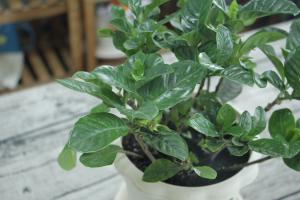Introduction
Pine trees are an excellent source of timber because they grow relatively fast and yield high-quality wood that is used in construction, furniture making and other applications. Planting pine trees for timber is not only environmentally sustainable, but it can also be a profitable investment for landowners. In this article, we will provide a step-by-step guide on how to plant pine trees for timber.
Step 1: Selecting the Right Site
The first step in planting pine trees for timber is to select the right site. Pine trees require well-drained soil, so it is important to choose a location that does not have standing water. They also prefer slightly acidic soil with a pH between 5.0 and 6.5. It is recommended to conduct a soil test before planting to determine the pH and nutrient levels of the soil. Pine trees require full sunlight, so the site should be free from shade or competition from other trees.
Step 2: Choosing the Right Tree Species
There are several species of pine trees that are commonly planted for timber. The choice of species will depend on the location and climate of the planting site, as well as the intended use of the timber. Some of the most popular species for timber production include loblolly pine, slash pine, longleaf pine, and ponderosa pine.
Step 3: Preparing the Site
Before planting, the site must be prepared by removing any existing vegetation and weeds. The area should also be tilled and compacted to ensure good seed-to-soil contact. If the site has poor soil quality, it may be necessary to add fertilizer or organic matter to improve the soil structure and nutrient levels. It is important to ensure that the planting site is free from any pests or diseases.
Step 4: Planting the Trees
Pine trees can be planted from seedlings or saplings. Seedlings should be planted in the spring, while saplings can be planted in the fall or spring. The planting hole should be at least 2 feet deep and wide enough to allow the roots to spread out. The seedling or sapling should be placed in the hole and gently covered with soil, taking care not to damage the roots. The tree should be watered immediately after planting to help it establish roots.
Step 5: Maintenance and Care
Once the trees are planted, they will require regular maintenance and care to ensure optimal growth and timber production. This includes regular watering during dry periods, fertilization, and pruning to remove any dead or damaged branches. Pine trees are also susceptible to pests and diseases, so it is important to monitor the trees and take appropriate action if any issues arise.
Conclusion
Planting pine trees for timber is a sustainable and profitable investment for landowners. By following the steps outlined in this guide, you can successfully plant pine trees and enjoy the benefits of high-quality timber production for years to come.

 how many times do yo...
how many times do yo... how many planted tre...
how many planted tre... how many pine trees ...
how many pine trees ... how many pecan trees...
how many pecan trees... how many plants comp...
how many plants comp... how many plants can ...
how many plants can ... how many plants and ...
how many plants and ... how many pepper plan...
how many pepper plan...






























